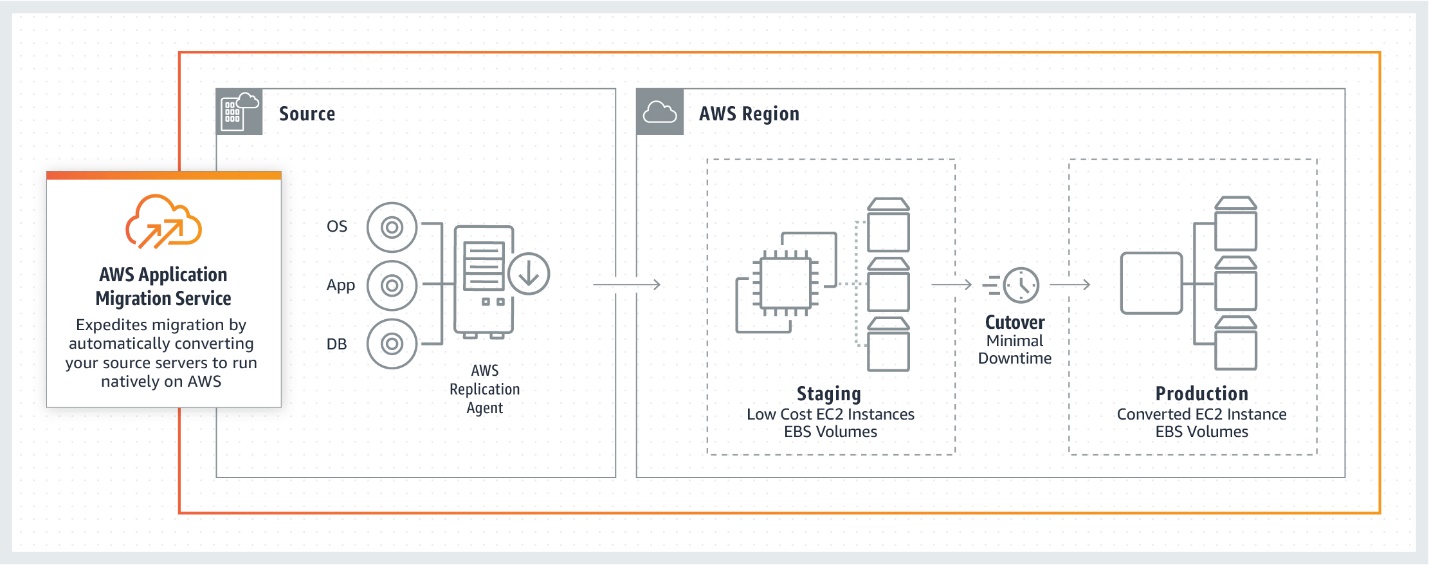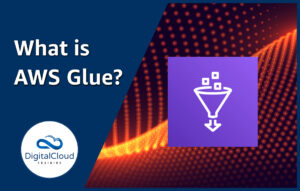Lift and Shift Cloud Migration
Please use the menu below to navigate the article sections:
- Lift and Shift Cloud Migration – Overview
- Lift and Shift Cloud Migration – Goal
- When Is a Lift and Shift Migration Recommended?
- Advantages of the Lift and Shift Approach
- Comparison of Lift and Shift to other cloud migration methods
- Tools Needed for Lift and Shift Migration
- Conclusion
- Ready to Take Your Tech Career to the Next Level?

IT organizations are rapidly adopting digital transformation to make their businesses efficient. Migration to the cloud is an integral part of the digital transformation journey. When migrating to the cloud, even experienced cloud experts often face issues related to:
- Data security
- External integrations
- Legacy applications
- Costing
- Staffing skilled cloud experts
The Lift and Shift migration provides the solution to the challenges listed above. Today, we’ll explore the Lift and Shift cloud migration strategy and its advantages over PaaS and SaaS migrations. Discover how Lift and Shift can solve common migration problems and help you transition to the cloud seamlessly.
Lift and Shift Cloud Migration – Overview
Lift and Shift migration – also referred to as re-hosting – is a method for moving existing infrastructure and applications to the cloud with fewer modifications. The application, middleware, and database are all moved to the cloud environment using this migration strategy, and the application is typically run on virtual machines (VMs) or containers.
Lift and Shift Cloud Migration – Goal
The primary goal of this migration strategy is to benefit from the cloud’s scalability, flexibility, and cost-saving features. During Life and Shift migration, you do not need to make significant changes to the application’s architecture or code, and the application and its infrastructure are transferred to a cloud environment smoothly. The application may run on virtual machines (VMs) or containers in the cloud environment. Using Lift and Shift migration, businesses can quickly migrate their current applications to the cloud without having to do any extensive re-architecture or refactoring.
When Is a Lift and Shift Migration Recommended?
Lift and Shift migration is ideal for scenarios where:
- You have short timelines
- You want to make minimal changes to existing code, infrastructure, and integrations
- Your existing applications are already running on virtualized or containerized environment
Advantages of the Lift and Shift Approach
Migration that is quick and simple
Lift and Shift migration is a quick and simple way to move infrastructure and applications to the cloud. This strategy can expedite the migration process by requiring little infrastructure and application modification. For instance, VMs or containers can be used by an organization to quickly migrate an existing application to the cloud without the need for extensive refactoring or complex configuration.
Cost savings
By moving away from expensive on-premises hardware and infrastructure, Lift and Shift migration can help businesses cut costs. Organizations can benefit from the cloud provider’s infrastructure and only pay for what they use (pay-as-you-go model). By moving their applications to the cloud, an organization can save money on hardware upgrades and maintenance.
Scalability and flexibility
By utilizing cloud infrastructure, Lift and Shift migration can assist organizations in achieving greater scalability and flexibility. Organizations can use cloud-native services to scale up or down the cloud resources to adapt to changing business needs. Through the features of dynamic scaling and auto-scaling, the number of compute instances or containers can be automatically adjusted by an organization based on the users’ load on the application.
High availability
By utilizing cloud infrastructure, Lift and Shift migration can assist businesses in achieving high availability for their applications. Redundancy and load balancing are some of the features that cloud providers offer to make sure that applications are always accessible. For instance, a business can use the Multi-AZ feature of AWS RDS to ensure that a secondary database automatically starts serving the application as soon as the primary database goes down.
Security and Compliance
By utilizing the security features provided by cloud providers, Lift and Shift migration can assist organizations in achieving greater security and compliance. Cloud providers offer features like firewalls, encryption, and identity and access management to ensure that applications are safe and compliant. For instance, a company can use the built-in EBS encryption to safeguard private information stored on the cloud storage.
Comparison of Lift and Shift to other cloud migration methods
Lift and Shift vs. PaaS Migration
Here is a quick comparison between the Lift and Shift approach and PaaS (Platform as a Service)
Migration complexity: The Lift and Shift approach involves moving the application and infrastructure to the cloud environment with minimal changes. On the other hand, PaaS requires more effort to re-architect or refactor the application to fit the PaaS environment, which can make the migration more complex.
Application management: In the Lift and Shift approach, the organization remains responsible for managing the application, middleware, and infrastructure, while in PaaS, the cloud provider is responsible for managing the infrastructure, middleware, and other services required to run the application. This means that PaaS offers easier management of the application and platform services, but with Lift and Shift, the organization has more control over the environment.
Platform and service flexibility: PaaS offers greater flexibility and scalability than Lift and Shift, as it provides a pre-configured platform that offers a range of services, such as databases, messaging, and caching, which can be easily integrated into the application. With Lift and Shift, the organization can take advantage of cloud-specific services but would have to set up and configure these services themselves.
Cost: Lift and Shift approach can be cost-effective as it involves fewer changes and does not require extensive re-architecting. PaaS, on the other hand, can be more expensive as it involves more effort to re-architect and requires more management of the platform and services.
Time to market: Lift and Shift approach can be faster to implement, as it involves fewer changes and can be done quickly. PaaS, on the other hand, requires more effort to re-architect and configure, which can increase the time to market.
Expertise required: Lift and Shift approach requires minimal cloud expertise, as it involves moving the application and infrastructure to the cloud with minimal changes. PaaS, on the other hand, requires more expertise to configure and manage the platform and services.
In summary, Lift and Shift is a simpler and quicker approach to migrating existing applications to the cloud, while PaaS offers more flexibility, scalability, and easier management of the application and platform services but requires more effort to re-architect and manage. Troubleshooting errors is also more challenging on PaaS.
Lift and Shift vs. SaaS Migration
Below is a brief comparison between the SaaS-based migration and Lift and Shift migration.
Scope: During the Lift and Shift migration, the whole application stack of a business, including the application code, infrastructure, integrations, database, and platform, is transferred to the cloud. On the other hand, SaaS migration entails migrating a particular application or service to a cloud-based SaaS provider.
Control: In Lift and Shift, companies manage and maintain their application and infrastructure, so they have full control over the process. In the case of SaaS, the organization does not have the same level of control over the application when moving to SaaS and relies on the SaaS provider to operate and maintain it.
Customizability: With Lift and Shift migration, organizations can customize their application and infrastructure to meet their specific needs. With SaaS migration, the organization may have limited customization options, as they depend on the features and capabilities provided by the SaaS provider.
Time to Deploy: Lift and Shift migration can be quicker to deploy because businesses can transfer their current apps quickly to the cloud. SaaS migration may take longer to deploy because organizations may need to adapt and customize the SaaS solution to match their technical and business needs.
Cost: For enterprises that have already made an investment in on-premises hardware and infrastructure, Lift and Shift migration may be more cost-effective. SaaS migration may be more cost-effective for organizations that do not want to invest in on-premises hardware and infrastructure, as they can pay for the service on a monthly or yearly subscription basis.
Maintenance: With Lift and Shift migration, businesses oversee and maintain their cloud-based applications and infrastructure. When a company migrates to SaaS, the SaaS provider takes over the management and maintenance of the migration, which can reduce the organization’s maintenance workload.
Ultimately, an organization’s specific needs and requirements will determine whether to migrate to SaaS or Lift and Shift. Lift and Shift migration is better suited for businesses that want to rapidly and affordably migrate their current applications to the cloud while retaining full control over their infrastructure and apps. Organizations that prefer to employ a cloud-based service that is managed by a third-party provider, and can reduce the maintenance burden on the business, are better suited for SaaS migration.
Tools Needed for Lift and Shift Migration
Some of the tools and services provided by AWS for Lift and Shift migrations are:

AWS Server Migration Service (SMS)
The automated migration of on-premises servers to the cloud is accomplished using the AWS Server Migration Service (SMS). It can migrate physical servers, virtual machines, cloud instances, and even docker containers running on VM.
Amazon Database Migration Service (DMS)
AWS DMS is a service that aids in the speedy and secure migration of databases to AWS. It allows replication and continuous data replication, as well as homogeneous and heterogeneous migrations.
Amazon Application Discovery Service
AWS Application Discovery Service assists users in planning their migration journey by automatically identifying and cataloging the on-premises apps and infrastructure. With the help of this service, the organization can prioritize its migration efforts by getting a complete picture of its assets.
AWS Snowball
AWS Snowball is a movable physical storage unit that facilitates swift and secure transfer of large amounts of data to the cloud. it is especially helpful for businesses that have spotty or unreliable network connectivity.
AWS CloudEndure
AWS CloudEndure provides continuous replication of servers, databases, and applications. It supports a number of source infrastructure types, such as cloud-based, virtual, and physical infrastructure.
Conclusion
In conclusion, the Lift and Shift migration strategy is an effective approach for cloud migration, allowing businesses to quickly and easily move their on-premises applications to the cloud without significant changes to the underlying architecture. AWS provides a range of tools and services specifically designed to support Lift and Shift migrations. With the right knowledge and tools, Lift and Shift migration can be a smooth and successful process for businesses seeking to transition to the cloud.
Ready to Take Your Tech Career to the Next Level?
At Digital Cloud Training, we’re dedicated to your success. Our courses offer up-to-date content, equipping you with the expertise to stand out in the competitive tech job market.
Our On-Demand Training allows you to learn at your own pace, fitting seamlessly into your schedule. Dive into the world of cloud computing whenever and wherever suits you best.
But we don’t stop at theory. Our Challenge Labs provide practical, real-world scenarios where you can apply your newfound knowledge without the risk of unexpected cloud costs. Gain hands-on experience and sharpen your skills.
For those seeking an immersive experience, our Cloud Mastery Bootcamp delivers live, job-ready training. Led by industry experts, this accelerated program can get you certified faster than you thought possible.
It’s time to propel your tech career forward. Join us at Digital Cloud Training and unlock your full potential in the world of cloud computing.





Responses